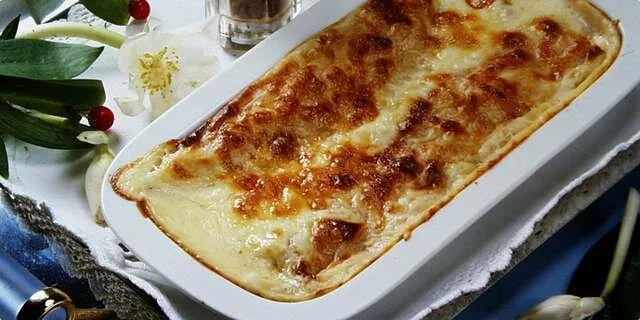Lika polenta
Grandma cooked duuuugo, on a "wooden" stove, or on an oven we called a goat and some may remember, and then acid or mashed real homemade milk, or white coffee, from wild, a lot of sugar, and maybe sauerkraut, greaves or fried bacon, and above all… mljac mljac mljac… In our country, polenta has been an important part of the diet for more than 5 centuries.
Preparation steps
- Put 2 liters of water in the pot, add 1 tablespoon of fat, add salt to our elders, or oil or butter. When the water boils, lightly pour the corn flour, not the fine one, but coarsely ground for polenta - scratch (here are the water mills in Sinac where they are ground), and mix lightly so that no lumps form. Cook for about 1 h on low heat min with constant stirring, but with the newer time I shortened due to the busy time to 20-30 min and the iso is fine. Before, polenta was cooked in a cauldron on the hearth, and today we still cook it on the stove in a pot on electricity, gas or wood.
- If you want crumbly polenta, cook it longer and always rub it on the bottom of the pot with the cooker while mixing, so we get polenta like crumbs. Ordinary polenta cooks thicker and there is also rare polenta, more water and less corn flour are added, here in Zagreb I came across the term žganci. According to Lika, it is called scratch and gloss, it is at the bottom of the paddle, ie the pot of crust, and when it was left at the end, you could put cold milk and grab all the gloss with a spoon. Along with polenta, polenta soup is usually cooked, but at the very beginning, when the water boils, a part of the soup soup is separated. Here is a recipe for polenta soup.
- In the Gacka Chakavian dialect, 2 liters of water, 1 kilo of corn flour, a little salt Preparation: In a cauldron on the hearth or in a large paddle, you should oil water and throw a small handful of salt and 1 tablespoon of fat. When the water is bubbling, it suddenly pours out the corn flour from the bowl and lets it cook gently and the misajon vajk gently pours the water over our flour. Then, in the middle of the rpice, make a mouse shell and leave it to cook for more than an hour, a sea and a half. When it has boiled well, the polenta is mixed and the mouse is measured for more than half an hour until it is ready. And it is ready when the linden begins to flour on the baked cornmeal. Uno cha remains burnt at the bottom of the scratch. Mat would dili ore zero milk and una would fight for scratch. Polenta can be cooked in three ways, if you want polenta on crumbs, then it cooks longer and the mouse mix is rubbed when you mouse and so the crumbs are made, if you want plain polenta, then it is cooked thicker, and if you want to roast, then add more water and less flour. Along with the polenta, polenta was also cooked.
- I used the Chakavian dialect from the book Return of Forgotten Tastes-Gačanska Traditional Cookbook. I don't know how old the recipe is 100, 200 or 300 years old, but it was eaten in the Gacka Valley, where it was found that the Japods lived in ancient times in the older Stone Age 10,000-4,000 g before the birth of Christ. Polenta is also a dish of "our ancestors" and is a common meal in the homes of the poor. In combination with meat, vegetables, cheese, milk and fermented dairy products, it is an integral part of the autumn and winter table.
